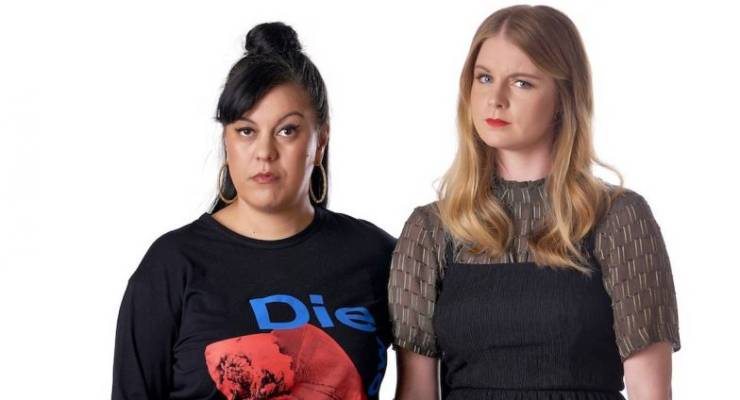
In Australia, traditional media treat news start-ups with condescension, if not open hostility. Meanwhile, New Zealand is building a more diverse and creative ecosystem based on collaboration between old and new.
The emerging cross-Tasman success story is based on practical government support through innovation and production grants, a “sharing is caring” approach led by the country’s public broadcaster and an integrated platform for crowd-funding.
As a result of working together and sharing both content and (at times) revenues, the New Zealand public have access to increasingly varied multimedia product, more reflective of a diverse society, with a broader approach to news, spread across documentaries, streaming television and podcasts.
It’s not all good news. A country with the population of, say, Queensland, leaves traditional commercial media struggling with the scale needed for either advertising-supported mass appeal media or paywalled subscriptions.
The two largest news start-ups — Newsroom and The Spinoff — have positioned themselves in overlapping markets. The Spinoff launched in 2014 and thinks of itself as having a magazine perspective, which delivers its particular style and tone and (pop) culture focus along with a TV show.
Newsroom was launched last year by three senior news executives and comes from a more traditional news journalism background with a focus on politics and business. Both leave day-to-day spot news — crime, weather, the political horserace — to traditional media.
Each employ about 15 journalists working across designated subject verticals. Both pride themselves on being news-breakers, rather than followers, with a focus on writing quality. The Spinoff has this year launched a crowdfunding appeal for investigations.
Both have similar funding models, based on corporate sponsors who support a particular subject vertical where there is a perceived gap in the market. For example, a bookshop sponsor has led The Spinoff to build the country’s major (perhaps, only) books vertical. Newsroom has crowdfunded for LockerRoom, providing in-depth coverage of women’s sport.
Like all the country’s media start-ups, they have been bootstrapped by their founders through the cash-flows of the business and parallel events, reports, documentaries or campaigns.
Rounding out the ecosystem are more demographically targeted sites like Villainesse, launched by singer Lizzie Marvelly as a feminist voice for young women or e-Tangata for Maori and Pacific Island storytelling. Villainesse is largely funded through production support from the government funding body NZ On Air which supports a broad range of media.
All the start-ups draw support through the Wellington-based funding start-up Press Patron. Launched by Alex Clarke, Press Patron crowdfunds about $500,000 a year on behalf of 56 online start-ups — mostly in New Zealand, with a handful in Australia and the US. For example, a targeted donations campaign rescued e-Tangata after the loss of a foundation grant.
Public broadcaster Radio New Zealand has filled the gap for news content and production expertise by providing news copy free of charge to old and new media. (The country’s wire service NZPA was closed by its publisher owners in 2010.) It collaborates on reporting and podcasts with other media.
Across the media, there’s a trepidation about what the Nine-Fairfax merger means for Stuff (the country’s largest publisher). The universal assumption is that it’s for sale — like just about every other traditional media — but without buyers.
Online, Stuff dominates. “It’s a traffic monster,” one journalist told Crikey. The company claims to reach nine in 10 New Zealanders, but advertising decline challenges its free model. This year, it closed about 20 of its community mastheads.
According to the Fairfax 2018 annual report, Stuff’s total revenue dropped 8%. Digital revenue growth of 21% largely came from affiliate services like internet service provider Stuff Fibre and hyper-local social networking platform Neighbourly.
Stuff has been attempting to merge with the country’s other major newspaper company, NZME, which is itself thought to be open to offers. Unlike Australia, the New Zealand regulator has blocked the merger because of the impact on the competition for ideas and information.
As a result, NZME’s New Zealand Herald is moving to follow the largely online National Business Review behind a paywall, but a decade of job cuts means it lacks the quality that NBR brings to business news, and lacks domination in any other competitive vertical.








This reporter seems never to have witnessed NZ TV, which has no public broadcaster, and is full of pretty empty “entertainment “. As Australians, who often watched the ABC and SBS, my wife and I kept TV off. Bring lots of books, when you visit NZ. Reflect on the damage privatisation does when you see what it has done in NZ. In the UK, it has fortunately not changed public broadcasting but to how utterly stupid it can be, try to use British Post.
“… which has no public broadcaster …” err … except that it does – TVNZ – the difference is that it is partly funded by advertising (like SBS).
This article is useless without any evidence of the reach and readership/viewership of this “diverse” ecosystem which honestly sounds little different to sites like Mamamia and Independent Australia and whatnot.
Also I’m not sure what a ” success story” it is when it sounds like it is heavily dependent on grants and donations and most of it is still in its infancy. We probably need some idea of what is said to make this a “success story” before the claim is worth anything.
This sounds like an interesting topic, but unfortunately the article as written is heavy on spruiking and light on hard facts.
I never knew vertical could be a noun.